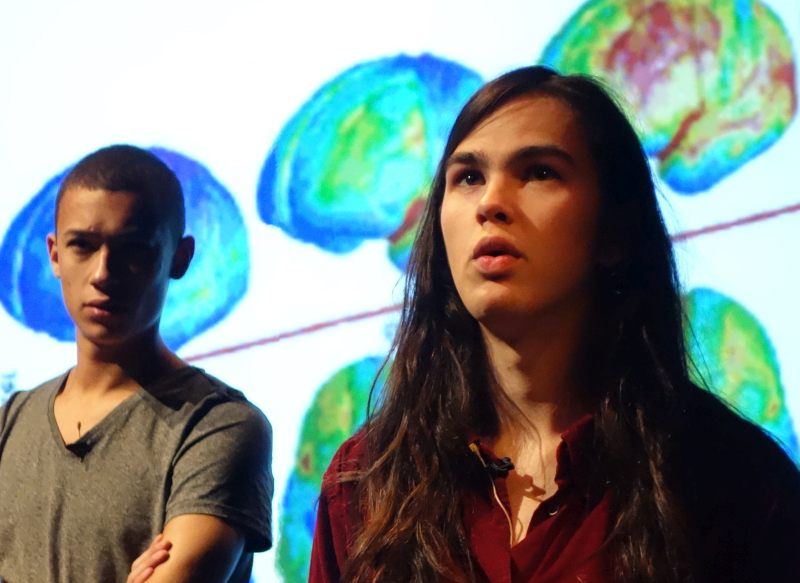 Three teenagers casually address the audience. They have something to tell us, something they have no words for. One asks what we want to know about, and if it’s possible to come close to someone else’s experience. Can we ever really understand? Can we remember what it’s like to be a child?
Three teenagers casually address the audience. They have something to tell us, something they have no words for. One asks what we want to know about, and if it’s possible to come close to someone else’s experience. Can we ever really understand? Can we remember what it’s like to be a child?
A high frequency sound is played. Only some of us can hear it. Not me. The hearing cells in our ears are fragile and break down with age. Can we remember the friends we had when we were sixteen? Trying to figure things out? Questions like does fate exist or is it all random? A question of luck? Apparently the grey matter in the brain is flexible. Experiences that are strong and close up carve into one’s senses, like remembering what it was like looking at the scabs on your juvenile knees. Are we different now? Can we remember being in gym class, and your kit and body aren’t clean? On a screen we see ‘street view’ of a local street, a street and a house where our protagonist lived. Can we now remember being a seven year old child? A YouTube clip of a baby being born is shown. A tiny human coming out of another human. How is it to look after that tiny vulnerable life? What if the mother doesn’t know how to do it? Doesn’t ever know how to do it?
And thus we’re led into imagining, sensing, and to some degree feeling this story. This life. A child under stress, the brain cells cannot grow to make so many connections like a ‘normal’ brain. A feeling like a disaster is going to happen, and you’re the only one who knows. With scientific representations and brain scans shown on a large screen we learn how a brain can become conditioned to fear. A fear that never goes away. A fear that becomes core material within the brain. Imprinted there. Information about what happens in the body and the brain during stress and abuse is mingled in with subjective experiences, memories, fantasies and dreams.
WOE is so direct. Director Edit Kaldor has made a show that is intelligent, personal and profound. Conveying the inner experience, these three young people (aged 16, 17 and 17) invite us to imagine these situations. Plumbing our memories and emotional imprints. Gradually the usual images of childhood are replaced by images connected to the experience of neglect and abuse. Of hunger. Of no one home when you arrive back after school. Where do go? How would you feel?
It’s tense, it’s bare, it’s gently and unsensationally delivered. Bearing witness, being listened to and really heard changes things. As an audience, being together and directly spoken to is powerful. Both confronting and comforting. It’s important, vital experiential work.

